TL;DR: Psychology’s journey into understanding the human mind has often ventured into ethically dubious, morally bankrupt territory. This article recounts ten chilling experiments that pushed the boundaries of decency, leaving psychological scars on participants and humanity alike. From Milgram’s study exposing obedience to authority, to the Stanford Prison Experiment’s descent into power-fueled chaos, and Harlow’s horrifying “Pit of Despair” for baby monkeys, these studies revealed more about the cruelty of unchecked ambition than the human condition.
Other disturbing tales include the CIA’s LSD-fueled Operation Midnight Climax, the Romanian re-education horrors, and sensory deprivation experiments that drove participants to hallucinations and despair. Together, these cautionary tales expose the dark side of curiosity unchecked by ethics, reminding us that progress is meaningless without compassion and accountability.
Psychology’s Dark Side: 10 Experiments That Will Haunt You Forever
Psychologists have often been seen as explorers of the human mind, boldly venturing into uncharted territory. But sometimes, those ventures cross into a realm far darker than curiosity alone can justify. The history of psychological research is littered with experiments that pushed the boundaries of ethics, humanity, and, frankly, common decency. These are the kinds of studies that leave you wondering if the researchers skipped their morality classes—or just didn’t care. From manipulating innocent minds to tormenting animals and volunteers alike, the annals of psychology are filled with unsettling tales of ambition gone awry.
What follows is a walk through the shadowy side of science: 10 psychological experiments so ethically bankrupt and morally questionable that they continue to haunt the field today. These aren’t just stories of academic overreach; they’re cautionary tales of what happens when curiosity, power, and hubris collide. Buckle up—it’s a grim ride. As we delve into these historical missteps, we’ll also encounter three intriguing thought experiments that challenge our understanding of ethics and morality in research. These scenarios provoke deep reflections about human behavior, the limits of scientific inquiry, and the potential consequences of sacrificing ethical standards for the sake of discovery. Each tale serves as a reminder that knowledge must be pursued with responsibility, lest we repeat the grave mistakes of the past. As we traverse through these cautionary tales, we invite readers to not only reflect on the past but also to engage with the pressing ethical dilemmas that modern research faces. The inclusion of three thought experiments to ponder will allow us to critically examine how far we’re willing to go in the name of knowledge and what philosophical boundaries should guide our inquiries. Ultimately, these stories and scenarios challenge us to confront the moral implications of our actions and decisions as we seek to push the frontiers of human understanding.
1. The Milgram Experiment: The Banality of Evil
In 1961, Stanley Milgram conducted one of the most infamous psychological experiments in history, placing the human moral compass under a microscope. He recruited ordinary individuals—teachers, office workers, and neighbors—to participate in what they believed was a study on learning and memory.
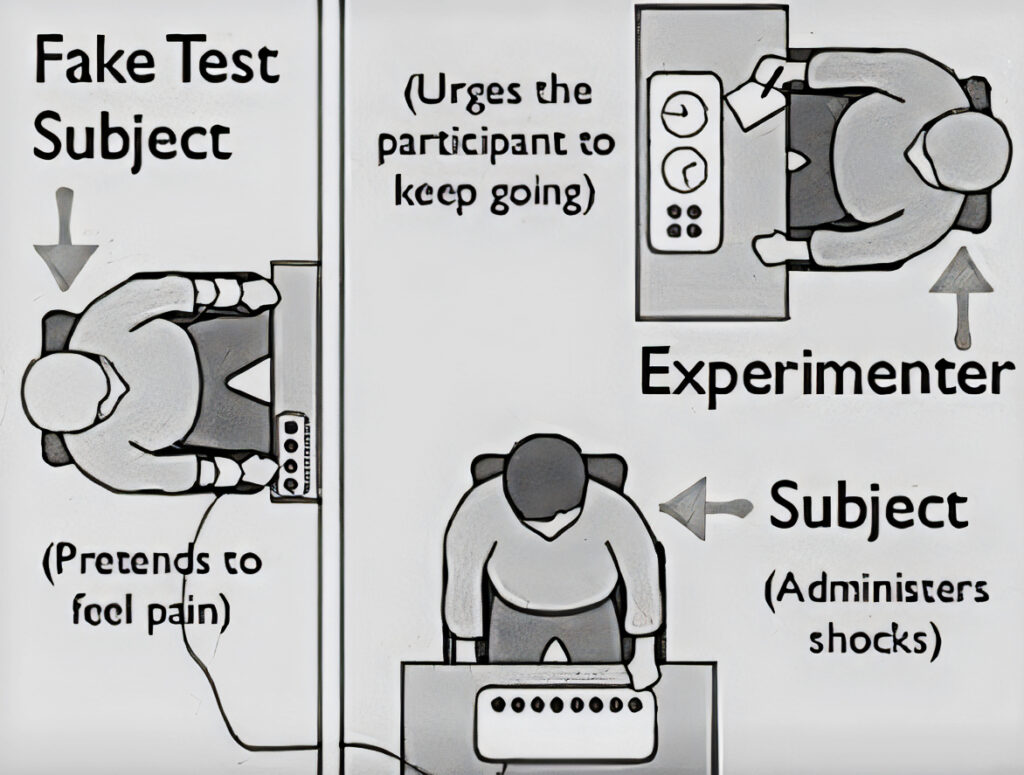
Their task was simple: administer increasingly severe electric shocks to an unseen “learner” in another room whenever they answered a question incorrectly. The “shocks,” of course, were fake, but the participants didn’t know that. As the supposed voltage increased, the “learner” (a trained actor) would cry out in pain, beg for mercy, and eventually fall disturbingly silent. The participants were nudged along by a calm but authoritative figure insisting that “the experiment must continue.”
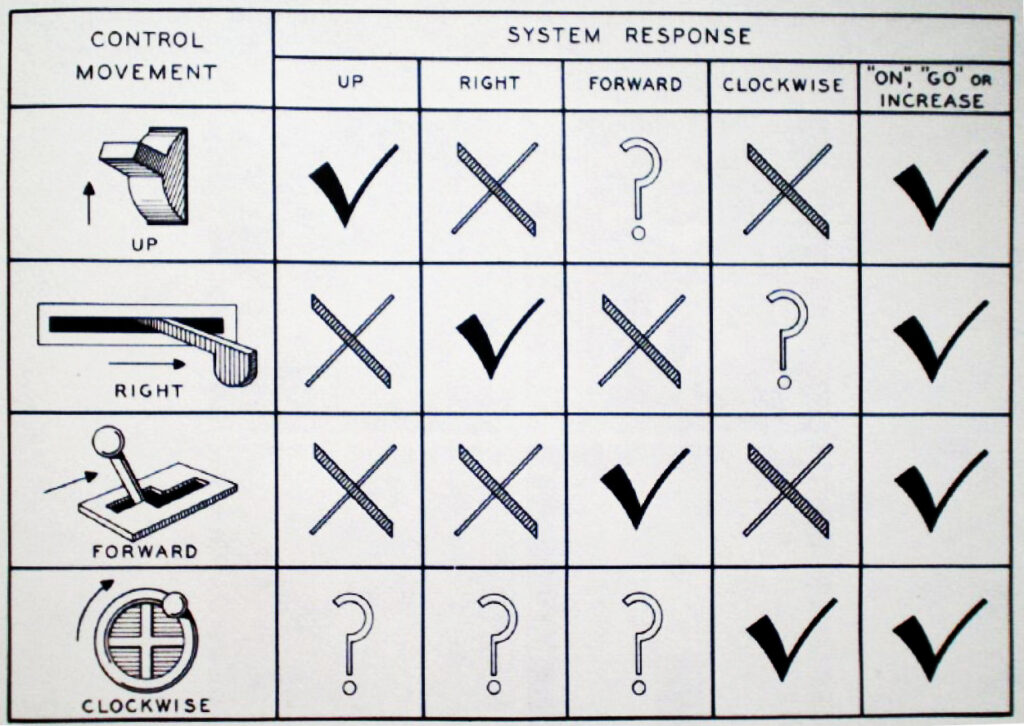
Here’s where the study became chilling. Despite obvious signs of distress from the “learner,” 65% of participants obeyed instructions and delivered what they believed to be the maximum, lethal voltage. These were not monsters, villains, or psychopaths—they were average people who, in their everyday lives, likely considered themselves kind, decent, and incapable of such cruelty.
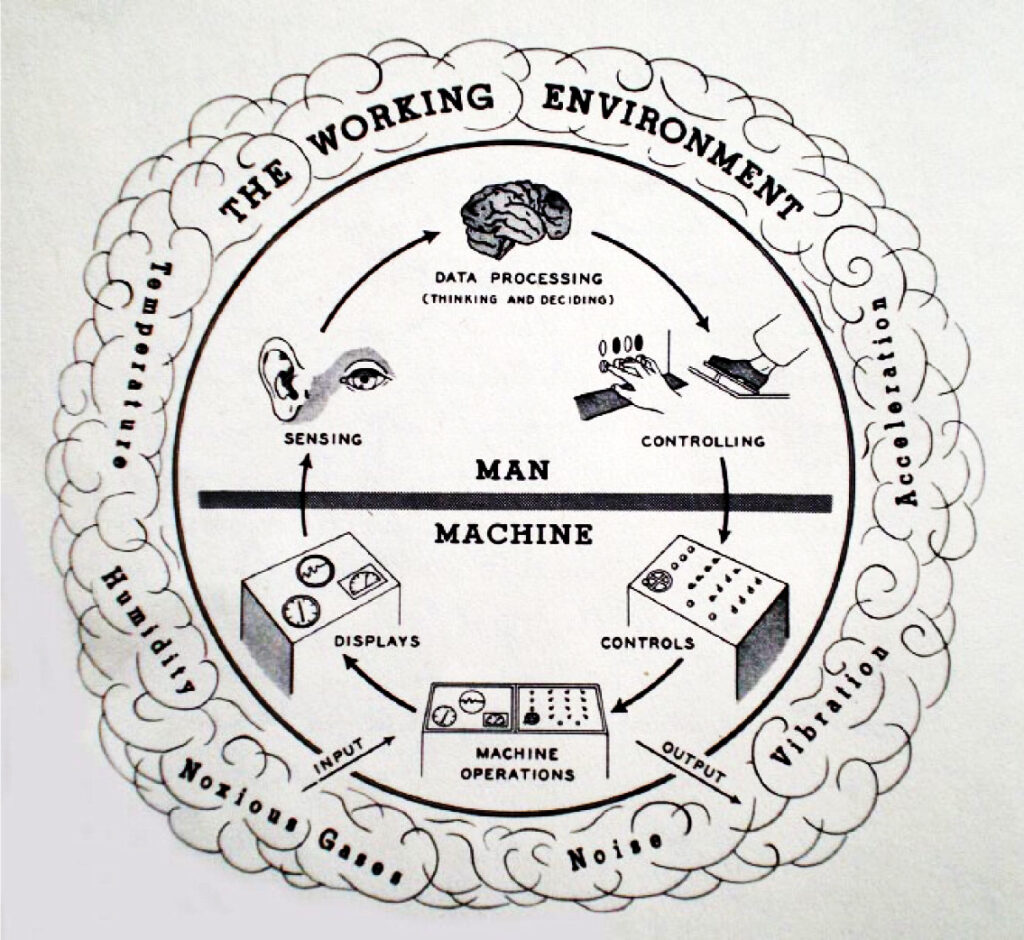
Milgram’s experiment revealed a dark and disconcerting truth about human nature: our inclination to defer to authority often overrides our sense of right and wrong. With a lab coat and a stern demeanor, authority can transform ordinary citizens into instruments of harm.
Thankfully, no actual shocks were delivered, but the psychological scars on participants—and the public—were undeniable. The results forced humanity to grapple with uncomfortable questions: How far will we go to obey authority? How much evil is born not from malice but from compliance? The experiment serves as a haunting reminder that moral responsibility is not something we can outsource, no matter how commanding the voice of authority may be.
2. Romanian Re-education Experiments: Breaking Souls
In post-war Romania, political prisoners were subjected to a psychological nightmare known as the “re-education experiments” at Pitești Prison. This wasn’t a psychological study—it was state-sanctioned sadism disguised as ideology.
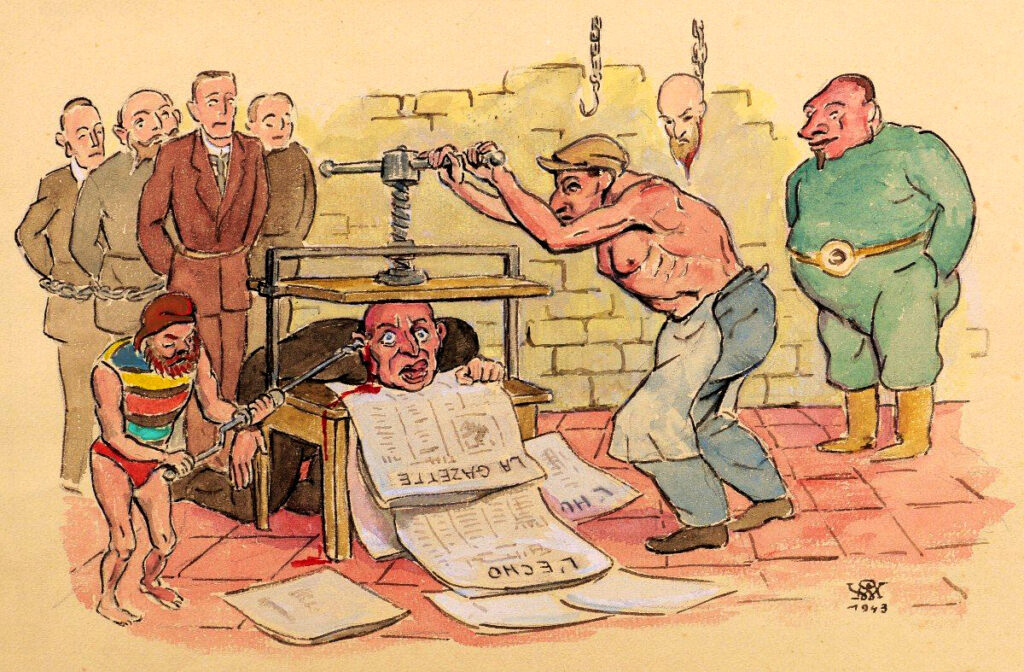
Prisoners were tortured into betraying their own beliefs, their peers, and even their humanity. Christian prisoners were forced to desecrate religious symbols, often dressed as Christ while being humiliated. This was “thought reform” at its most grotesque, with the ultimate goal of breaking the human spirit.
By 1952, the prison was shut down, and several of the tormentors were executed. The damage, however, was irreparable—a grim reminder of how ideology can be wielded as a weapon.
3. Operation Midnight Climax: The CIA’s LSD Shenanigans
The saga of Operation Midnight Climax reads like a rejected script from a darkly comedic espionage flick, yet it unfolded in the very real annals of CIA history. As a subset of the notorious MKUltra program—America’s poorly-kept secret of human experimentation—the agency decided the best way to study the effects of LSD was to dispense with such trivialities as ethics, consent, or basic decency.

Enterprising operatives set up “safe houses” that were anything but, hiring sex workers to lure unsuspecting men into these makeshift dens of deception. Once inside, these hapless individuals were unwittingly dosed with acid, their drug-induced reactions dutifully observed by CIA agents perched behind one-way mirrors, presumably while stifling laughter or taking notes like dispassionate lab technicians studying rats in a maze.
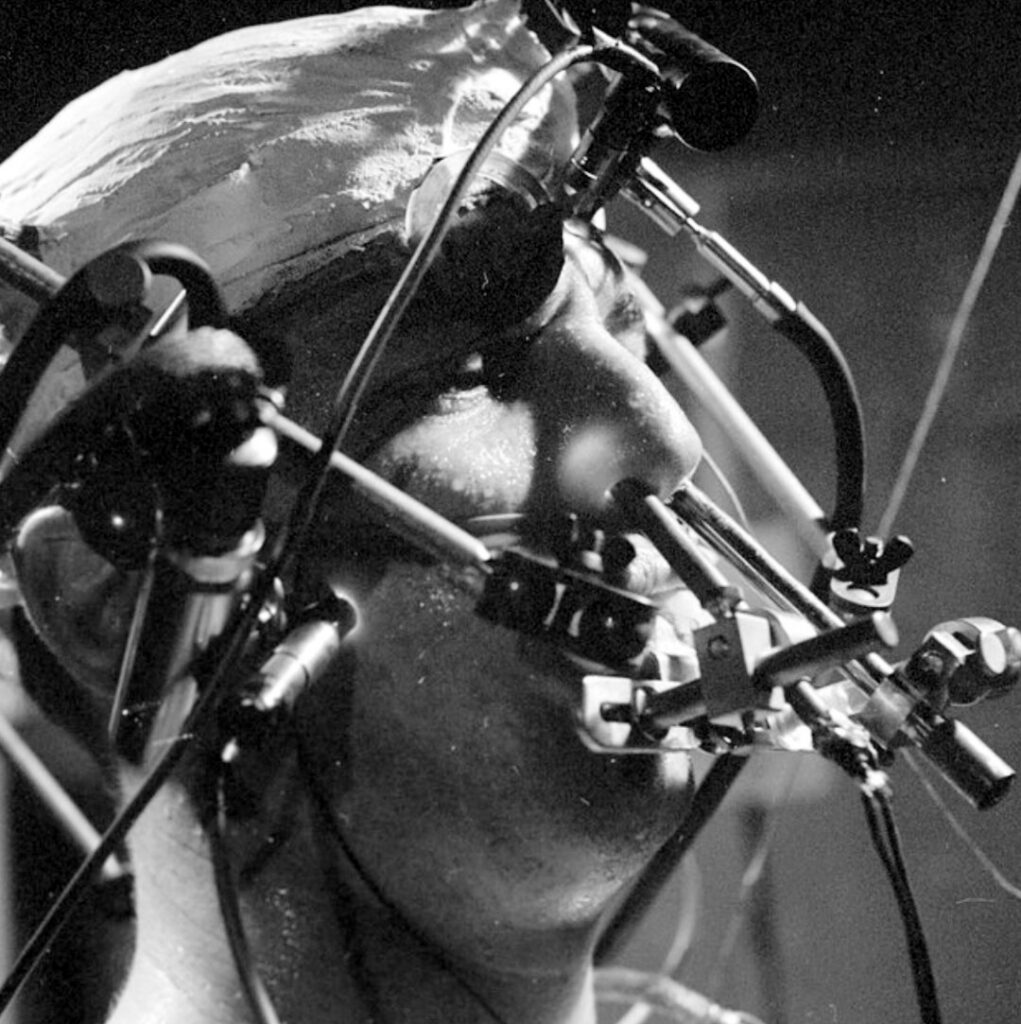
But the absurdity didn’t stop at the method; it extended to the premise itself. The entire operation was predicated on the belief that mind control could somehow be achieved through hallucinogens and clandestine surveillance, a notion so preposterous that even the most mediocre spy thrillers would deem it too far-fetched.
For over a decade, the CIA engaged in what can only be described as state-sponsored insanity, trampling civil liberties under the guise of scientific research. This farcical endeavor not only epitomized bureaucratic overreach but also showcased the agency’s uncanny knack for combining hubris with lunacy—proof that sometimes, truth is indeed stranger (and far more troubling) than fiction.
4. The Pit of Despair: Torturing Monkeys for “Science”
Harry Harlow, a psychologist with a penchant for grotesque experimentation, decided to dive headfirst into the study of depression by constructing a contraption so diabolical it could have been penned by a Disney villain.
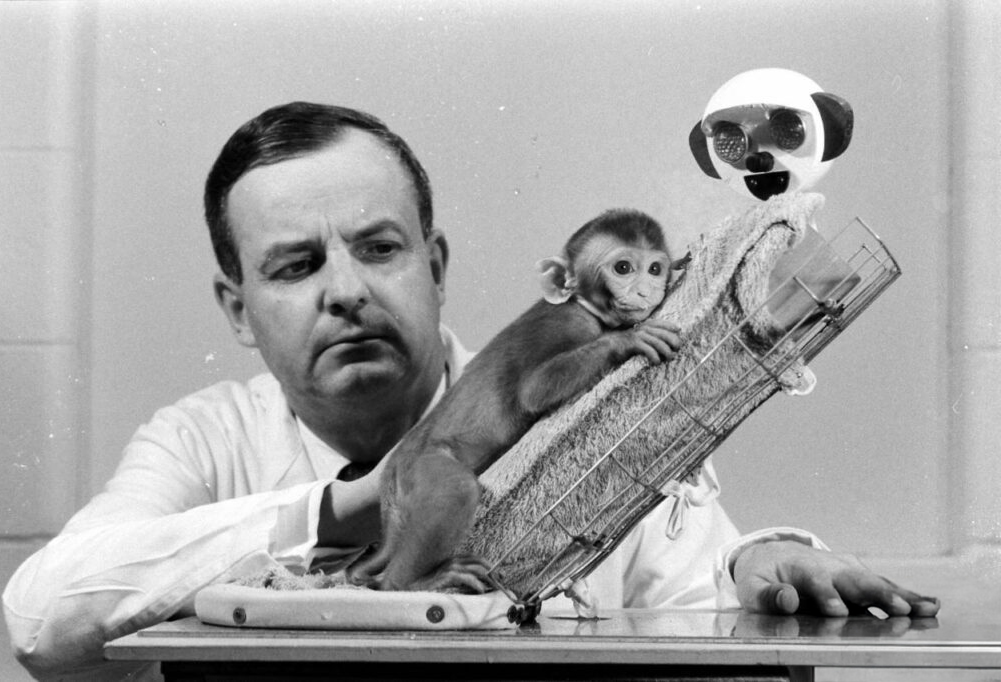
He called it the “Pit of Despair,” a cage of unimaginable cruelty designed to isolate baby monkeys from their mothers and peers in total darkness. These innocent creatures, ripped from any semblance of connection or comfort, were left to languish in solitude, their spirits shattered. The results, unsurprisingly, were devastating. The monkeys emerged profoundly damaged, exhibiting severe psychological issues that left them incapable of normal social interaction for the rest of their lives.
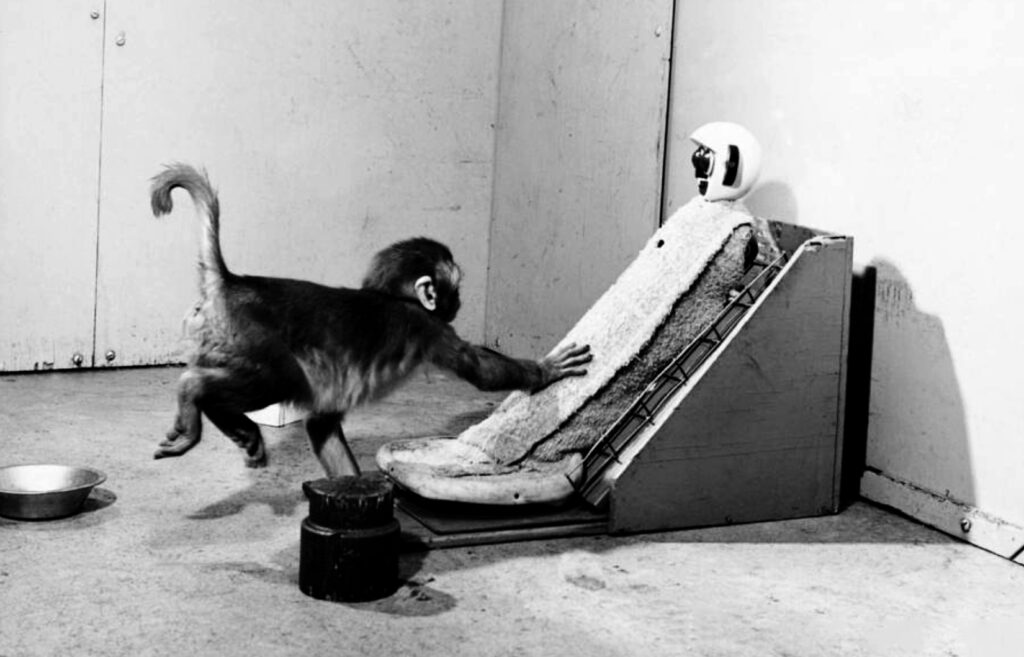
Harlow, with all the moral clarity of a mad scientist in a Saturday morning cartoon, argued that his torture chamber provided insights into human depression. What it really revealed was something far darker: the frightening ease with which science, untethered from compassion, can morph into barbarity.
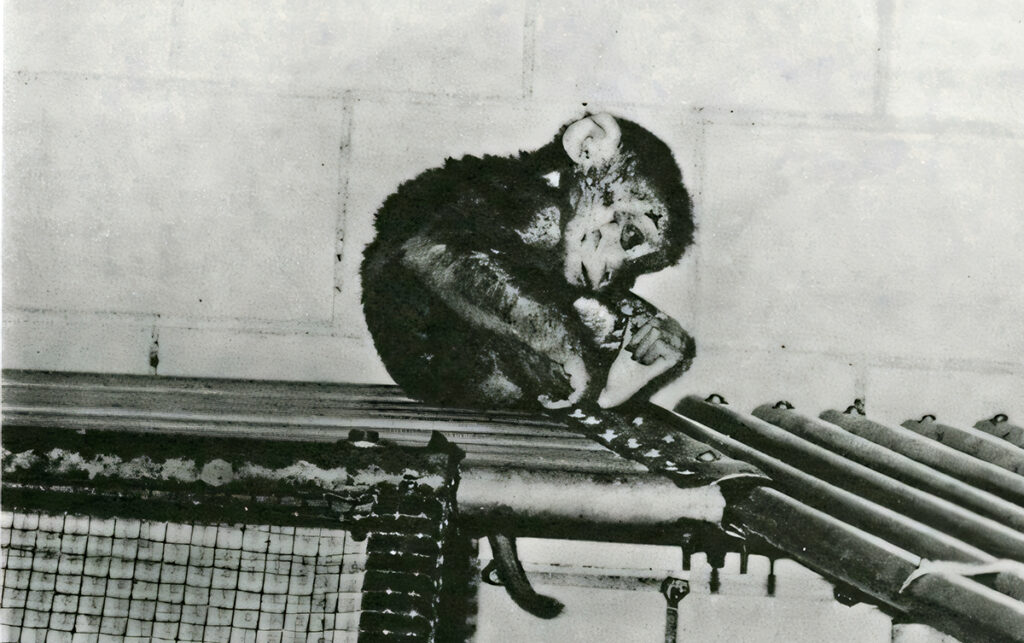
The “Pit of Despair” didn’t just expose the effects of isolation—it highlighted the depths to which humanity can sink in the pursuit of knowledge. Far from enlightening us about the human condition, it serves as a grim cautionary tale of what happens when curiosity overrides conscience..
5. The Stanford Prison Experiment: A Study in Ethical Collapse
The Stanford Prison Experiment, often hailed as a groundbreaking study, was more like a glorified frat house hazing ritual masquerading as science. Conducted by psychologist Philip Zimbardo in the early 1970s, this “experiment” arbitrarily assigned college students to play the roles of prisoners and guards in a mock prison setup.
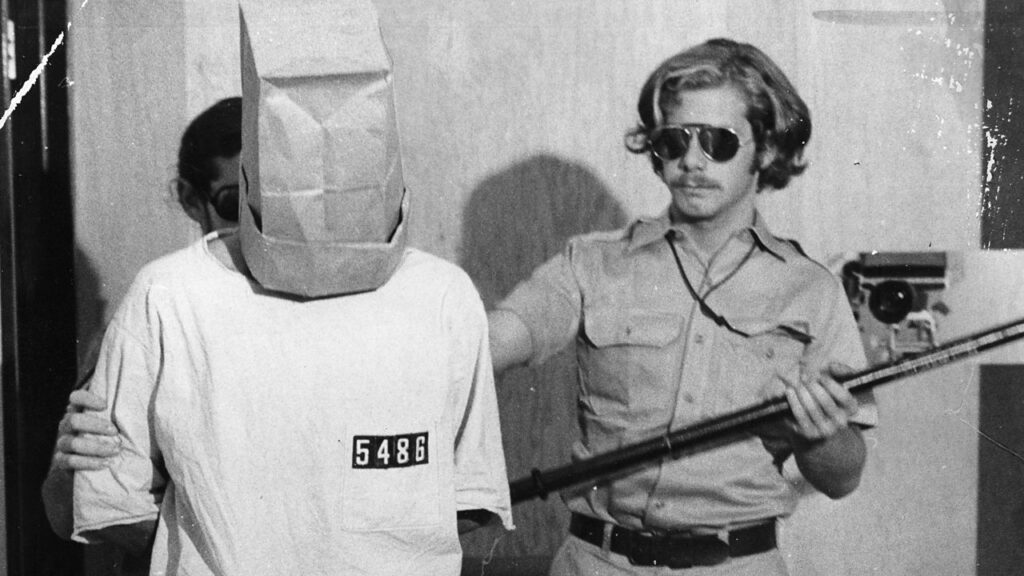
It didn’t take long—just a few days—for the whole thing to spiral into chaos. The guards, drunk on their pretend authority, devolved into tyrannical bullies, humiliating and abusing the “prisoners.” Meanwhile, Zimbardo, the puppet master of this social horror show, stood by, gleefully observing the chaos while claiming it was all in the name of science.
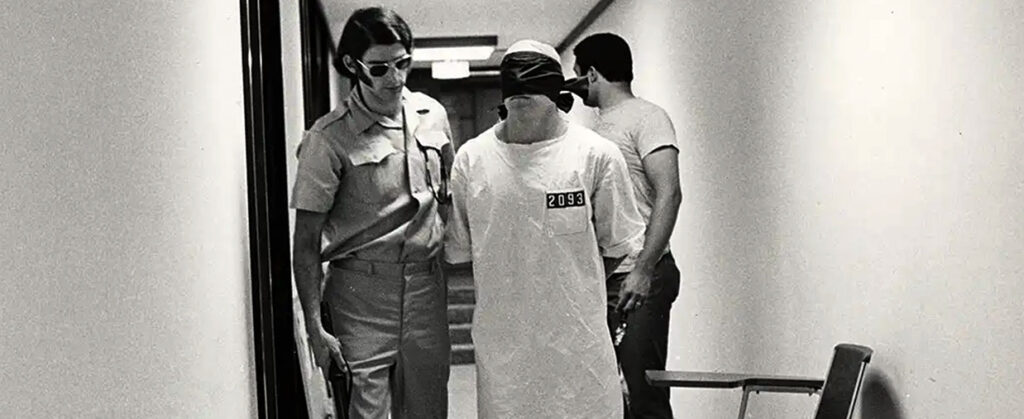
What Zimbardo really proved wasn’t the corrupting nature of power, as he so boldly declared, but the corrupting nature of poorly executed experiments with no ethical boundaries.
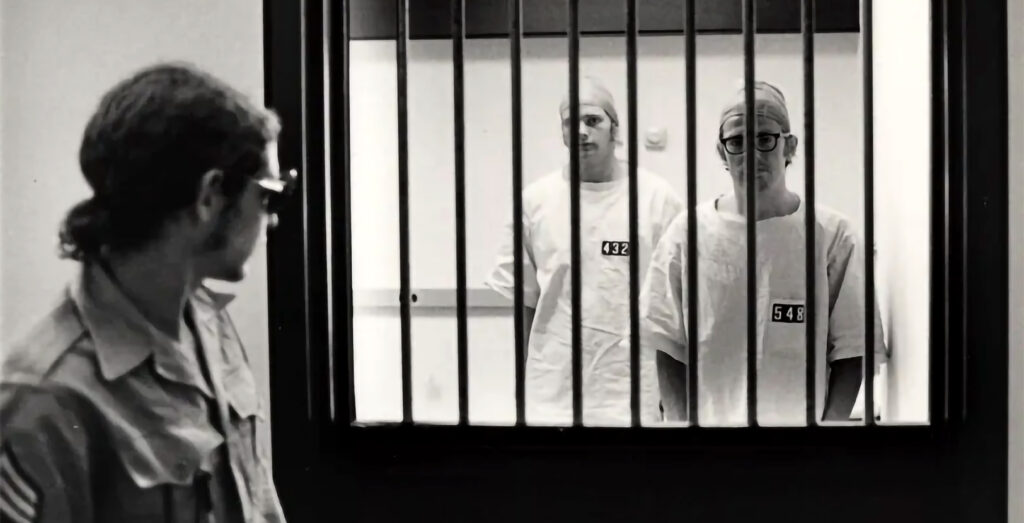
The whole thing was a circus, less a controlled study and more an excuse to push young men to their breaking point for entertainment masquerading as research. The real tragedy?
Society still refers to this ethically bankrupt spectacle as if it revealed some deep truth about human nature, when in reality, all it revealed was the danger of letting unchecked egos and dubious methodology run wild in academia. This phenomenon only serves to highlight the disconnect between genuine intellectual inquiry and the spectacle that often masquerades as scholarship. As researchers chase sensationalism over substance, we risk diluting the very essence of academic rigor. Moreover, this trend mirrors the way slang evolution in contemporary language can sometimes overshadow the depth of communication, reducing complex ideas to catchy phrases devoid of real meaning. This shift towards superficiality not only threatens the integrity of academic discourse but also parallels how slang evolves in digital communication. Just as catchy phrases can eclipse nuanced understanding in language, the pursuit of eye-catching findings often prioritizes style over substance in research. If we fail to recognize these patterns, we may risk creating a culture that values spectacle over the rigorous pursuit of knowledge, resulting in a landscape where true intellectual engagement is increasingly rare.
Further Proof that Ethics Were Just a Suggestion
Psychology has a troubling history of crossing ethical lines in the name of discovery. The Hoffling Hospital Experiment, Ian Robbins’ Isolation Experiment, and Donald Hebb’s Sensory Deprivation Study are stark reminders of how research can quickly descend into inhumane territory. These studies reveal more about the dangers of unchecked ambition than they do about the human mind.
Hoffling Hospital Experiment: Blind Obedience in Healthcare
The Hoffling Hospital Experiment is yet another case study in how easily authority can manipulate ordinary people into doing the unthinkable. Conducted in 1966, this so-called experiment involved hospital nurses being instructed by an unknown “doctor” over the phone to administer a dangerously high dose of a fake drug to a patient. Remarkably, 21 out of 22 nurses followed through with the order—or at least attempted to—despite it blatantly violating hospital policy and common sense. Let’s pause and let that sink in: almost every single nurse, trained professionals tasked with saving lives, blindly obeyed a disembodied voice telling them to poison a patient. Why? Because it came from someone claiming to be in charge.
This “experiment” didn’t uncover some profound truth about human behavior; it exposed a deeply uncomfortable reality: people are disturbingly willing to forfeit personal judgment when authority looms over them. The nurses weren’t villains, but the study shows just how fragile morality can become when wrapped in the veneer of obedience. The researchers may have applauded their findings, but at what cost? Exploiting people’s trust in authority to prove a point about that very trust isn’t just ironic—it’s ethically bankrupt. It’s another grim reminder of how psychology often dances on the edge of its own moral abyss.
Ian Robbins’ Isolation Experiment: Oyster Shells and Madness
Ian Robbins’ Isolation Experiment was the kind of study that makes you wonder if common sense and basic humanity were optional prerequisites in the field of psychology. Conducted in 2008, it locked six volunteers in soundproofed rooms, depriving them of light, sound, and human interaction. The result? Paranoia, hallucinations, and a collective descent into despair. One participant hallucinated 500 oyster shells—because why not? Another started losing the will to live. And here’s the kicker: all of this suffering was voluntary, as if that somehow makes the entire setup less twisted. Robbins may have wanted to “explore the effects of isolation,” but in reality, he created a dystopian nightmare for a handful of poor souls who probably thought it’d just be a quirky social experiment.
This wasn’t research—it was psychological voyeurism disguised as science. What did Robbins actually hope to prove? That humans need light, sound, and interaction to avoid losing their minds? Groundbreaking stuff. It’s the kind of experiment that doesn’t just scrape the bottom of the ethical barrel—it drills right through it. Sure, we’ve learned that isolation can wreak havoc on the human mind, but at what cost? The willingness to turn people into guinea pigs in the name of curiosity doesn’t just reflect on the individual scientist—it reflects on a broader cultural tendency to treat human beings as expendable when it suits our intellectual ambitions.
Donald Hebb’s Sensory Isolation Study: Hallucinations for $20 a Day
Donald Hebb’s Sensory Isolation Study is what happens when you combine curiosity with a complete disregard for human dignity. In the 1950s, Hebb decided to see how the brain would respond to sensory deprivation, and his method was nothing short of sadistic. He stuck volunteers—mostly graduate students—in tiny rooms, blocked their hearing with pillows, covered their hands with gloves, and left them to marinate in their own thoughts. For this torture, they were paid a whopping $20 a day. Within days, the volunteers were hallucinating vividly, seeing blobs of light, grotesque images, and who knows what else. The original plan was six weeks, but no one lasted longer than a few days before their cognitive functions started falling apart. Shocking, right? Humans can’t handle existing in sensory purgatory. Who could have guessed?
What’s most disturbing isn’t just the hallucinations—it’s how quickly Hebb abandoned even a shred of ethical responsibility. He essentially turned his students into lab rats and called it science. The whole thing screams, “We did it because we could,” rather than, “We did it because it mattered. ” Sure, we now understand a little more about how the brain responds to isolation, but was it worth the psychological toll on these participants? The study wasn’t just flawed—it was a moral failure, exposing how easily intellectual ambition can overshadow basic human decency. Furthermore, the ramifications of Hebb’s experiment extend beyond the psychological harm inflicted on individuals; they also raise questions about the ethical boundaries of scientific inquiry. In a society that often grapples with the murky waters between ambition and morality, one might ponder whether understanding astrology’s appeal is a more humane and responsible pursuit. After all, exploring why people are drawn to such beliefs could yield insights into the human condition without sacrificing ethical standards or well-being.
Lessons from the Ethical Abyss
Psychology, for all its claims of advancing human understanding, has often teetered on the edge of its own dark abyss. These experiments weren’t just breaches of ethics—they were reflections of humanity’s capacity to rationalize cruelty in the name of progress. From torturing animals to manipulating unsuspecting participants, these so-called pioneers of psychology seemed less interested in understanding the human condition and more invested in seeing how far they could push the boundaries of decency.
The unsettling truth is that science, for all its virtues, is only as moral as the people conducting it. The experiments we’ve explored here serve as grim reminders of what happens when the pursuit of knowledge becomes untethered from compassion and accountability. These aren’t just cautionary tales; they’re warnings. If history has shown us anything, it’s that without steadfast ethical oversight, the darkest parts of human ambition will always find a way to resurface, draped in the lab coat of progress.
More from Featured
Truth Is Stranger Than Fiction: These 6 Facts Prove It
Interesting facts are like a secret backdoor. They let you see the world in ways most people never notice. Occasionally, …
The Real-Life Simpsons: A Bold Reimagining Hits Theaters in 2025
https://www.youtube.com/watch?v=GUWxoP1pmis The upcoming 2025 release of The Real-Life Simpsons may be the most absurdly ambitious gamble Hollywood has taken to date. …
The Real Cost of Participation Trophies: How We Raised a Generation of Entitled Adults
It’s the age-old story of the participation trophy, that shiny piece of plastic designed to placate little Timmy after his …




















